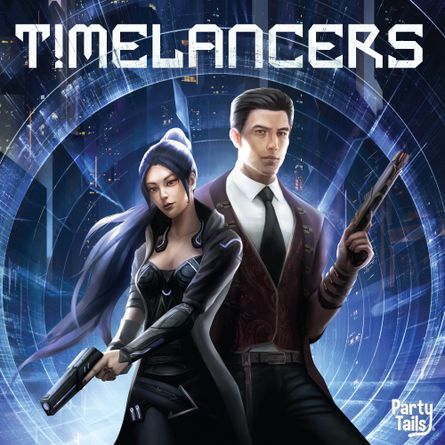SMOOSH JUICE
Designer Diary: Timelancers | BoardGameGeek News

by Party Tails
Traveling Back to the Beginning
The development process for Timelancers started in 2020 and stemmed from our shared love of all things science fiction: movies, books, comics, games — you name it. One area of the sci-fi genre we thought would fit well as a light to mid-weight board game was time travel.
One of our favorite aspects of the time-travel genre is the concept of the “butterfly effect”, when a small revision in the past can cause a much larger and more significant impact to the future. With that concept in mind, we started the design process of Timelancers with two goals:
1. Create a game in which players are time travelers revising real historical events from the past.
2. The revisions players make to the past will affect their gameplay AND the gameplay of the other players at the same time.
Designing a Time Machine: Attempt One
Our initial concept for the game was a set collection/race to the finish. Initially we were obsessed with making everything circles, probably stemming from the idea of time loops and other similar concepts.
There would be a rotating circular city board with action spaces that players would move around and collect resources, and each player would have their own circular time machine board to move their worker around collecting historical event cards from an available draft pool. Players would have to meet certain end goals, such as revising a certain number of modern, middle age, and ancient events. When they revised older events, this would cause more recent events for all players to rotate, thus changing whether a player was meeting their end goals.
A lot of these initial concepts carried over to the final design of Timelancers, but we weren’t 100% happy with it. We wanted the butterfly effect to have more of an impact on gameplay.
Changeability of the Event Cards
The first thing we scrapped from the initial design was the winner being determined by a race to the finish, opting instead for a point-salad type of scoring at game’s end. This led to us placing different point values on the revise and repeat sides of the event cards — which meant the butterfly effect could alter other players’ endgame scores.
To speed up the game, we added different types of abilities to the event cards that would allow players to build an engine and make collecting event cards more efficient. Almost immediately after this idea, we decided to add two abilities to the event cards; one on the revise side and one on the repeat side. The butterfly effect would now change the engines players were working on during gameplay.
Designing a Time Machine: Attempt Two
With all of the changes to the event cards, we knew the circular time machine needed to be changed. Originally, players would collect event cards and keep them in a pile or pool near their time machine, but we wanted everything to be more organized, so we redesigned the time machines to be horizontal and to have spaces to place event cards. This had the added benefit of looking like a timeline of historical events when the event cards were placed down.
Ever-Changing City
At this point, we knew we were heading in the right direction with the design. However, we still felt like the butterfly effect didn’t have a big enough impact on gameplay, so we posed the question: “What if the city actions changed, too?”
We scrapped the entire rotating circular city board idea and switched to a modular hex-tile city. This would allow the city to have a different set-up at the start of each game, but also allow us to change the actions available in the city during gameplay by having the hex tiles be double sided. “Why not have just one board that flips over if events were all going to be affected by revisions?” The answer to that question is why we added the different types of historical events.
We started off with science, war, and arts. However, when working on balancing the abilities, we decided four categories would be better, so we added social and renamed the other events to science, military, and cultural. The city tiles would then be associated with a different event type and only those event types would flip when an event card of a matching type was revised.
The Art of Time Travel
It was at this point that we all agreed Timelancers would be the next game we would take to crowdfunding, so it was time to start working on the artwork and graphic design of the game.
We were lucky enough to find Harry Bui, a talented artist in the Tampa Bay, Florida area. We sent him the list of event cards along with inspirational art to base the designs on, and we love all of the artwork he has created for us. We also found T. Sterling Little to create the futuristic city artwork for the city tiles and the game board.
Harry also created the character designs for the four timelancers and the enforcer — and from those character designs, Game Trayz created five character models to be used as the player figurines in the game.
Prototypes and Playtesting
The initial prototypes started with printed paper and miscellaneous pieces from other board games. As the artwork came in, we added it to the card designs, then we 3D-printed the resources and character pieces.
We started playtesting with outside groups while the game was in this unfinished state to hone in the mechanisms of the game and the same issues kept arising time and time again. The “fun factor” of the game didn’t kick in until round three or four when players had collected enough resources that they could finally start time traveling. We knew we needed something to kickstart the revision of events and flipping of city tiles earlier.
The Legality of Time Travel
The Time Enforcer was a component of the game from very early on. The backstory of Timelancers is that time travel is illegal and the Time Enforcers are out to stop the Timelancers from succeeding.
Originally, the Enforcer mechanism was meant only to create a blocked location in the city so that each round would have a non-performable action that players must plan their strategy around. (Bonus design note: Before Game Trayz designed the Enforcer figure, we were using a futuristic cop car, which was actually a modified Back to the Future DeLorean 3D model.)
After realizing the “fun factor” was taking too long to kick in, we revamped the Enforcer mechanism and beefed up their backstory. The Time Enforcers would not only be trying to stop the Timelancers, but also going back to change history to return the future to the way it was. We added actions to the enforcement cards that would either revise events and cause the butterfly effect or simply flip the city tile the Enforcer would land on. This also had the additional benefit of helping to cycle through event cards in the draft pool.
Final Time Travel Preparations
From this point on, a lot of the design process was just waiting for all of the artwork and putting the finishing touches on the graphic design. The last few major design decisions came pretty close to our crowdfunding launch.
We knew eventually we would want to translate the game into multiple languages and to do that we wanted it to be as seamless as possible, so we worked on eliminating as much English language from the game mechanisms as possible and used icons instead. Some English text remains in the game, but it’s mostly for flavor text such as the names of the events or the names of the city tile locations.
The final major design change occurred after Timelancers was announced as a 2023 Cardboard Edison Award finalist. We received great feedback from all of the judges and one consistent comment was that the time machine actions should read from left to right with the ancient actions being on the left to visually sync up with the chronological order of the event cards.
All of the judges’ comments mentioned only the visual synchronization as the justification for making this change — but doing this changed the gameplay significantly as the modern events that would be placed on the right side of the time machine tend to have the action abilities…which are activated when a time machine action is performed. Switching the time machine actions placed the cheaper and more highly used time machine actions on top of where the modern event cards would more-than-likely be placed, making it more beneficial to players, especially early on in the game.
Back to the Present
We launched the first Kickstarter in June 2023, but quickly noticed some hiccups with the international shipping and cancelled it. We relaunched and successfully funded in October 2023.
Through the Kickstarter campaign, we added more event cards, changed the solo gameplay, and added the Enforcer Expansion, which adds a fifth player to the game using a one vs. many mechanism in which one player becomes the Enforcer and plays against a team of Timelancers.
Timelancers is being delivered to backers and is available to buy as of April 2025.
Thank you for reading the brief design history of the creation of Timelancers. We are proud to share the game with the world and look forward to having as many people as possible play it. We skipped over a lot of minor details, but please feel free to ask questions about the game, the design process, or anything else we mentioned in the comments and we’ll be glad to elaborate.
Thanks,
The Party Tails Team

/pic8315237.jpg)
/pic8800841.jpg)
/pic8815531.jpg)
/pic8815571.jpg)
/pic8800844.jpg)
/pic8800846.jpg)
/pic8815574.jpg)
/pic8800849.jpg)
/pic8800850.jpg)
/pic8800851.jpg)
/pic8800852.jpg)
/pic8815580.jpg)
/pic8800854.jpg)
/pic8317685.jpg)
/pic8800855.jpg)